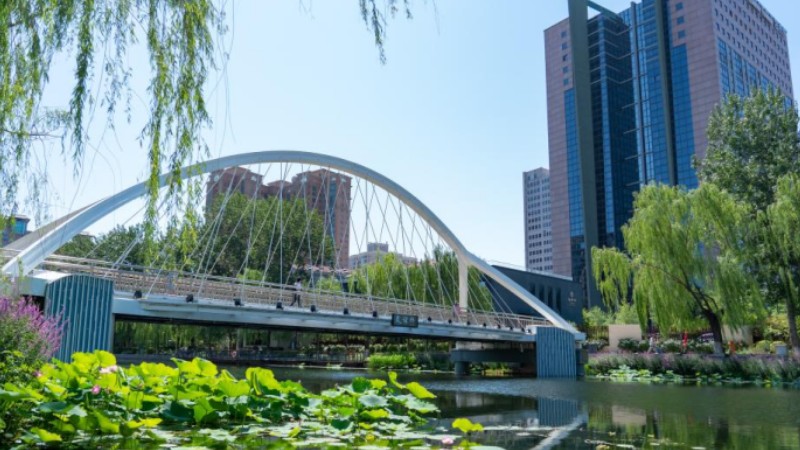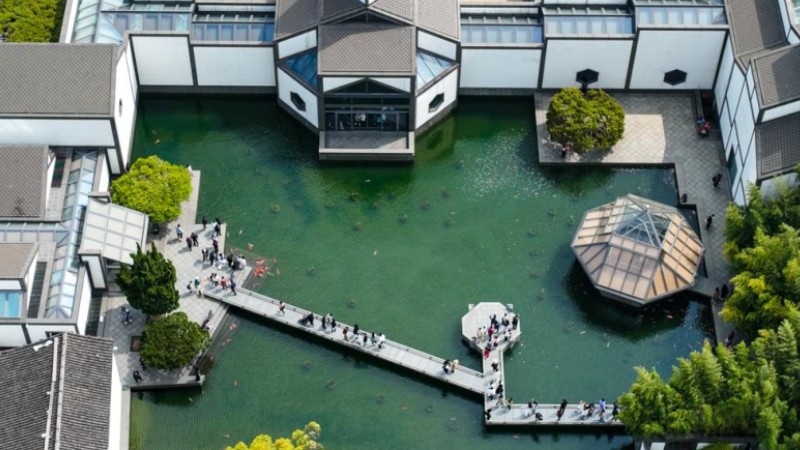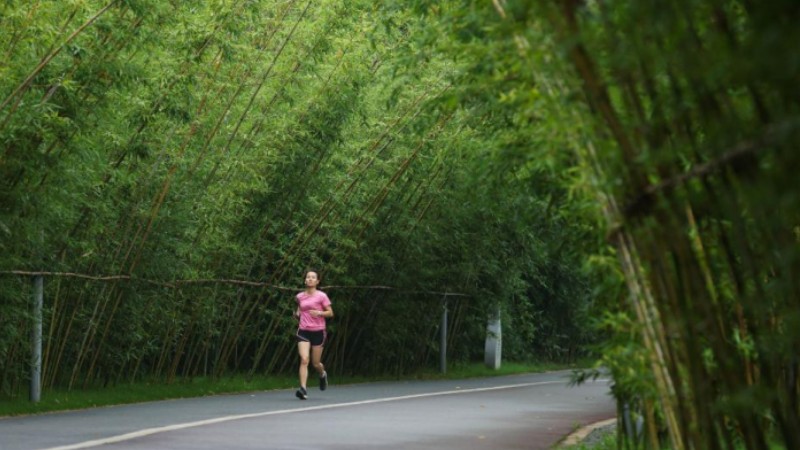Regong arts in NW China's Qinghai gain new lease of life, bring prosperity to locals
Huangnan Tibetan Autonomous Prefecture in northwest China's Qinghai Province has used Regong arts, including thangka painting, a Tibetan Buddhist painting form, to help many people become involved in the relevant sectors, embarking on a path of developing the culture industry and boosting rural revitalization by tapping into unique resources.
Regong arts are both a national-level intangible cultural heritage and a UNESCO-listed intangible cultural heritage.

An apprentice works on a thangka painting in the Longshu Painting Center in Wutunxiazhuang village, Longwu township, Tongren city, Huangnan Tibetan Autonomous Prefecture, northwest China's Qinghai Province. (Photo/Ma Kexin)
There are many thangka art centers along the Longwu River valley in Qinghai, including the Longshu Painting Center in Wutunxiazhuang village, Longwu town, Tongren city of the prefecture. The center covers the design, processing, production, sales, training, publicity, and exhibition of thangka paintings, and went into operation 10 years ago.
Sangjieka, a young thangka painter, has been at the center for nine years. He began studying thangka painting there with his friends.
The art form involves many complex steps, but he quickly learned it under the instruction of Quzhi, co-founder of the center and a thangka painter.
"We strictly follow the traditional techniques of thangka painting and make pigments from minerals or plants. It takes a painter nearly a whole year to finish a thangka painting," said Sangjieka.
"Making a handmade thangka painting is time-consuming. We use pigments derived from agate, cinnabar, gold, and other sources, ensuring that the color lasts for a long time," said Quzhi.
The center has recruited nearly 1,000 apprentices and combined Regong arts with tourism products to promote the integrated development of culture and tourism, said 40-year-old Wande Jiancuo, general manager of the center. Currently, the center's annual revenue exceeds 20 million yuan (about $2.78 million).
Sangjieka's family used to make a living by planting highland barley and wheat on 5 mu (about 0.33 hectares) of land. In the first year that he learned thangka painting at the center, he earned 8,000 yuan there. In recent years, his annual income from the center has exceeded 100,000 yuan.
Sangjieka's elder sister and brother-in-law have also taken up the craft in the center. They receive a subsidy of about 50,000 yuan every year even though they have not yet completed their apprenticeship, said Quzhi.
"We welcome anyone who earnestly wants to learn thangka painting," Quzhi said, adding that the center now has over 800 apprentices from other parts of the country.
The innovative way Regong arts is being passed down is a microcosm of the prefecture's efforts to advance the protection of cultural heritage and promote the integrated development of culture and tourism.
Wande Jiancuo is the 11th generation inheritor of thangka art in his family, which has been engaged in the art form for 760 years. He has been awarded a number of honorary titles, including China's "rural cultural and tourism entrepreneurial leader," and "national model worker." He suggested encouraging thangka painters to produce more artworks and attaching importance to brand building and marketing to expand sales channels.
Tongren city is now home to 89 comprehensive centers for teaching and learning intangible cultural heritage. Based on these centers, the city has cooperated with 356 culture and tourism companies, said Yin Tinghua, an official with the prefecture.
"In the first five months of 2022, Tongren received 2.56 million tourist visits, with tourism revenue reaching 810 million yuan. A variety of activities themed on this year's Regong culture and tourism festival have been held since May. So far, both tourist visits and tourism revenues have exceeded last year's figures," Yin added.
Wanmajia, director of the Tongren intangible cultural heritage protection center, said 42,000 people in Tongren work in various trades related to Regong arts.
Photos
Related Stories
- Scenery of grassland in Tianjun County, NW China's Qinghai
- Researcher dedicated to Tibetan antelope protection in NW China's Qinghai
- Magnificent scenery of colors of Erling Lake and sky merging on horizon
- 3rd China (Qinghai) Int'l Ecological Expo kicks off
- E-commerce promotes rural revitalization in NW China's Qinghai
- Scenery of Qairhan salt lake in Golmud, NW China's Qinghai
Copyright © 2023 People's Daily Online. All Rights Reserved.









